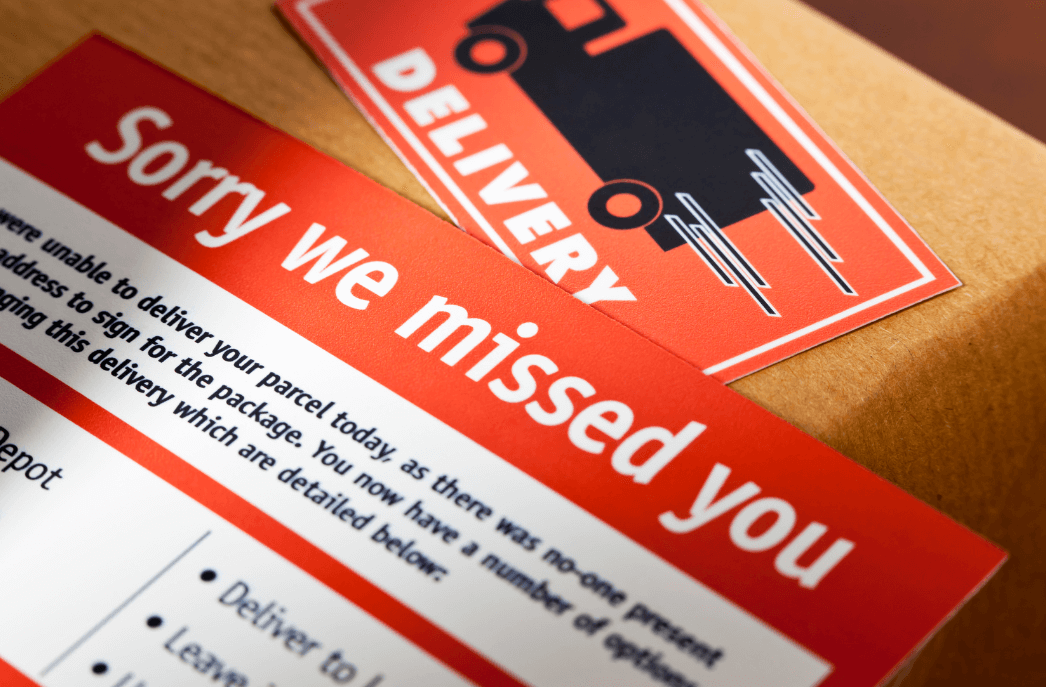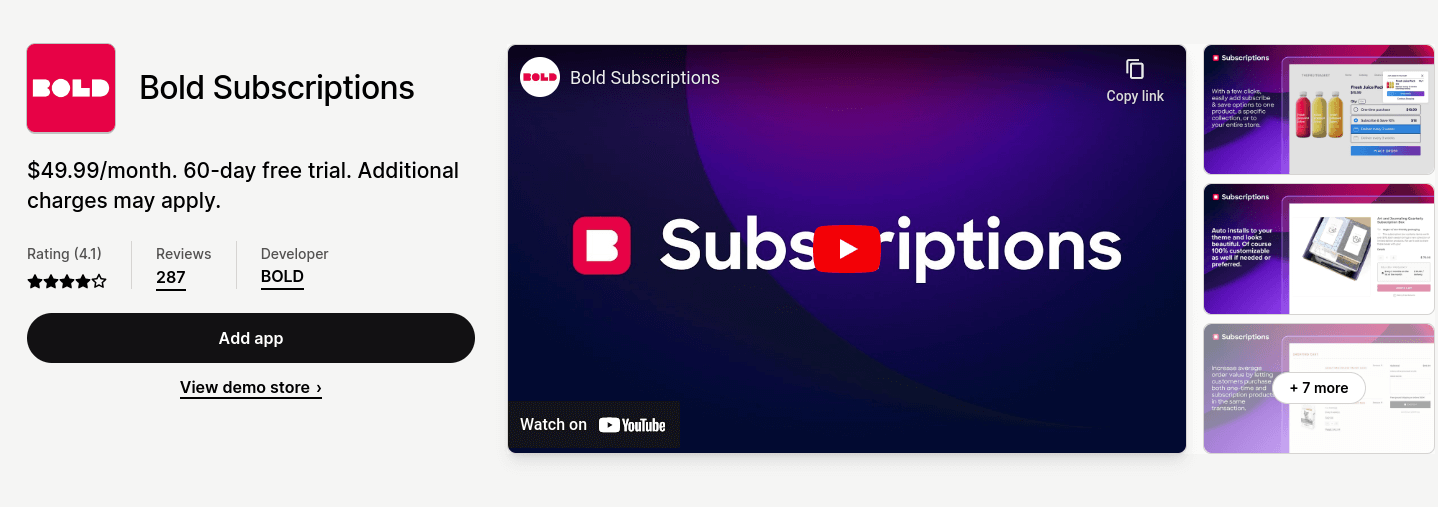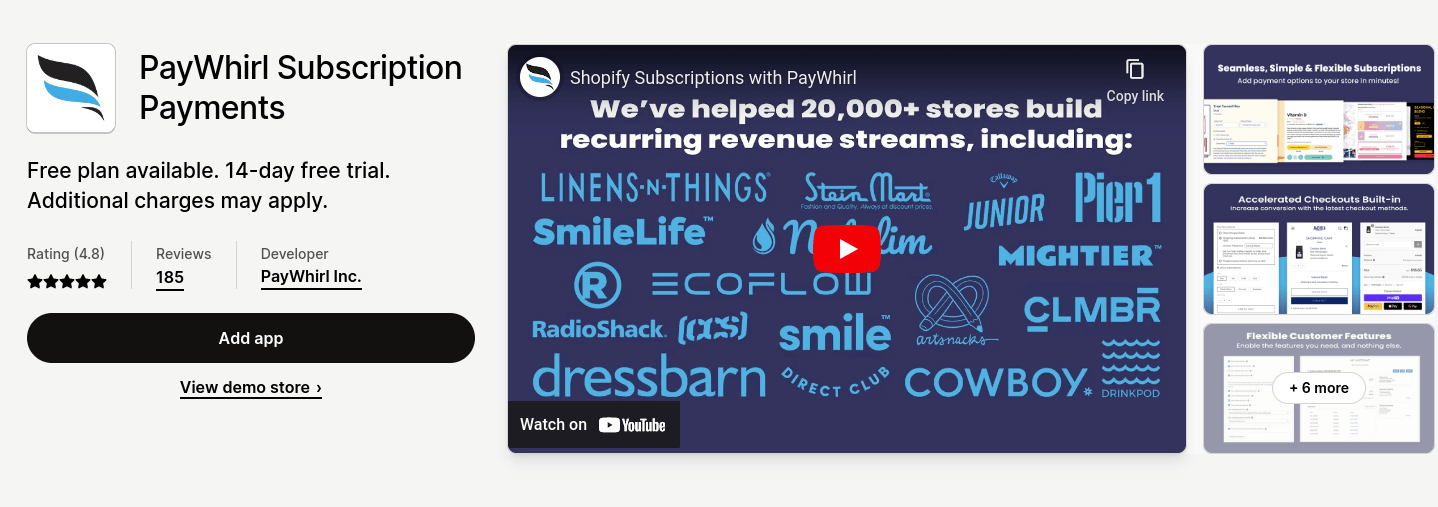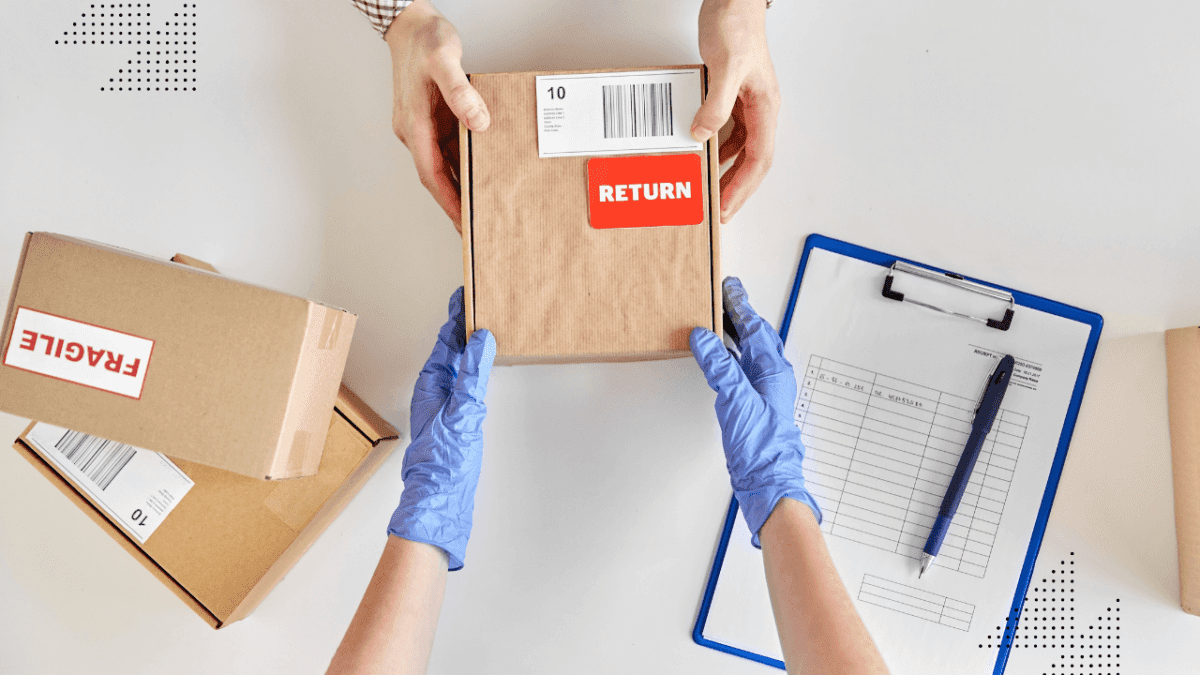Returns Software Basics for Ecommerce Leaders
Shipped
on
June 5, 2023
Efficient returns management is a critical component of running a successful ecommerce business. In the ever-evolving world of online retail, providing a seamless returns experience is essential for maintaining customer satisfaction and loyalty and, ultimately, driving business growth. Returns software is pivotal in streamlining the returns process, minimizing manual effort, and maximizing operational efficiency.
As an ecommerce leader, understanding the basics of returns software is crucial for optimizing your returns management strategies and ensuring a competitive edge in the market. This article aims to provide executives, vice presidents, and directors at ecommerce stores with a comprehensive guide to returns software basics.
We will delve into the significant impact returns have on the profitability of ecommerce businesses, supported by relevant data. Additionally, we will explore how a robust returns system can enhance customer satisfaction and loyalty, leading to increased repeat purchases and positive brand advocacy.
Why Returns Management is Essential
Returns management plays a significant role in the profitability of ecommerce businesses, particularly those generating over $5 million in revenue. According to industry data, returns can account for up to 30% of all online orders. This percentage can vary depending on the industry and product category. The financial impact of returns is substantial, resulting in lost sales, operational costs, and potential inventory write-offs.
Moreover, returns have a direct impact on customer satisfaction and loyalty. A good returns system can enhance the overall customer experience by providing a hassle-free and convenient return process. When customers have confidence in the ease of returning products, they are more likely to make purchases. Positive experiences with returns also contribute to long-term customer loyalty and positive word-of-mouth recommendations.
This article will share insights, best practices, and case studies to provide real-world examples of successful returns software implementation in ecommerce businesses. By understanding returns software basics comprehensively, you will be equipped with the knowledge and insights necessary to make informed decisions that can transform your returns management processes and drive business success.
What is Returns Software?
Returns software, also known as return management software or reverse logistics software, is a specialized tool used by ecommerce businesses to streamline and automate the process of handling product returns. It is essential to any efficient and customer-centric ecommerce operation, as it helps manage the complexities associated with returns, exchanges, and refunds.
Returns software facilitates the inspection and evaluation of returned items. It enables businesses to set up predefined rules for accepting or rejecting returns based on criteria such as product condition, warranty status, or return reason. This ensures consistent and fair returns processing while minimizing fraud and abuse.
Furthermore, returns software provides analytics and reporting capabilities, allowing businesses to gain insights into return patterns, reasons, and costs. This information can be used to identify areas for improvement, optimize product quality, and enhance customer satisfaction.
Overall, returns software plays a crucial role in managing the complex and often challenging process of product returns in ecommerce. Automating and streamlining return operations helps businesses reduce costs, improve customer experience, and build trust and loyalty with their customers.
Key Features of Returns Software
Returns Software should offer features that make the return process easy and efficient. Look for features such as automated labeling and tracking, integrated analytics, customizable reporting, real-time notifications of returns processes, comprehensive customer support, and more. Here are a few of the key features you should look for in returns software:

Automated Return Processing
Returns software should streamline the return process, minimizing manual effort and expediting the resolution time. It automates tasks such as return inspection, sorting, and restocking, reducing the need for manual intervention and accelerating the refund or replacement process. By automating return processing, businesses can save time, improve operational efficiency, and provide faster resolutions to customers.
Integration
Returns software should integrate with other systems such as accounting, ERP, or CRM to ensure consistency and accuracy. These integrations also enable you to track customer data and preferences to offer a personalized experience.
Return Initiation and Authorization
Returns software should allow customers to request returns online easily. It should automate the authorization process based on predefined rules and policies set by the business. By automating return initiation and authorization, businesses can provide a seamless experience for customers, reducing friction and ensuring consistency in return policy enforcement.
Return Tracking and Status Updates
Returns software should provide real-time visibility into the status of returns. Customers and businesses should be able to track the progress of returned items from initiation to resolution. Real-time tracking and status updates enhance transparency and communication, allowing customers to stay informed and businesses to manage returns efficiently. This feature reduces customer inquiries and provides peace of mind for both parties involved.
Inventory Updates
Returns software should automatically update inventory levels and product availability in real-time. Accurate inventory management is crucial for preventing overselling or stockouts, optimizing stock replenishment, and ensuring a seamless customer experience. By keeping inventory data current, businesses can avoid selling unavailable products due to returns and make informed decisions about restocking and purchasing.
Customer Communication Tools
Effective communication with customers throughout the returns process is vital. Returns software should facilitate communication by providing notifications, updates, and support. Customers should receive timely information about the progress of their returns and any necessary actions they need to take. Clear and proactive communication enhances customer satisfaction and builds trust and loyalty.
Benefits of Using Returns Software
Returns software offers numerous benefits that can greatly contribute to the success of ecommerce stores, especially those generating over $5 million in revenue. Here are some key advantages of using returns software:
- Improved operational efficiency: Returns software automates and streamlines the entire returns process, from initiation to resolution. It eliminates manual tasks, reduces errors, and accelerates the processing time for returns. This efficiency translates into time and cost savings for ecommerce businesses, allowing them to focus on core operations and growth strategies.
- Enhanced customer satisfaction: Providing a seamless returns experience is crucial for customer satisfaction and retention. Returns software simplifies the returns process for customers, making it easy to initiate returns, generate shipping labels, and track the progress of their returns. This level of convenience and transparency improves customer satisfaction, builds trust, and fosters loyalty.
- Cost savings: Returns can be a significant cost burden for ecommerce businesses. Returns software helps optimize inventory management, preventing overstocking and reducing storage costs. It also enables businesses to enforce return policies, minimizing fraudulent or abusive returns. Returns software helps improve profitability and financial performance by reducing unnecessary returns and associated costs.
These benefits become even more critical for ecommerce stores generating over $5 million in revenue. Efficient returns processing allows them to handle larger volumes of returns effectively, reducing operational bottlenecks and ensuring customer satisfaction.
Moreover, cost savings resulting from streamlined processes and optimized inventory management directly impact the bottom line, boosting profitability and enabling further investment in growth strategies. Ultimately, by utilizing returns software, ecommerce stores can gain a competitive edge, enhance customer experiences, and achieve sustainable success in the highly competitive ecommerce landscape.
Choosing the Right Returns Software
When considering returns software options, evaluating various factors is essential to ensure you choose the most suitable solution. Some factors to consider include:
- Cost: Start by assessing the pricing structure of returns software options. Consider both upfront costs and ongoing fees, such as licensing or subscription fees. It’s crucial to balance the cost with the expected return on investment and the benefits the software offers.
- Ease of Use: Look for returns software that is intuitive and user-friendly. The software should have a clean and well-designed interface, making it easy for your team to navigate and utilize effectively. Consider the learning curve and training requirements for your staff.
- Integration Capabilities: Evaluate the integration capabilities of returns software with your existing systems. Seamless integration with your order management, inventory management, and customer relationship management systems is essential.
- Customer Support: Consider the level of customer support provided by the returns software vendor. Reliable and responsive customer support is crucial for resolving any issues or technical difficulties that may arise during implementation or ongoing usage.
- Scalability: Your business is likely to grow and evolve. Therefore, choose returns software that can scale along with your business. Assess whether the software can handle increasing order volumes, accommodate additional product lines, or adapt to new return policies and workflows.
- Customizability and Flexibility: Customizability and flexibility are essential in a returns software solution. Your business may have unique return policies, workflows, or branding requirements, and the software should allow you to customize these aspects to align with your specific needs.
When evaluating different returns software options, take the time to compare features, read customer reviews and case studies, and even request demos or trials to get hands-on experience. This will help you better understand how each software solution aligns with your business needs and whether it can deliver the expected benefits.
Are you an ecommerce business owner looking to optimize your returns process and enhance customer satisfaction? Take the next step towards improving your returns management by getting in touch with us. At Invisible Commerce, our team of experts are here to provide personalized information and guidance on choosing the right returns software for your specific business needs. Contact us today!
Implementing Returns Software
Implementing returns software in an ecommerce business requires careful planning and execution. Here are the key steps involved in the implementation process:
- Evaluate and select the right returns software: Research and evaluate different returns software options to find the one that aligns with your business needs and requirements. Consider factors such as ease of use, integration capabilities, scalability, and customer support.
- Train staff: Once you have chosen a returns software solution, provide comprehensive training to your staff. Ensure they understand how to use the software effectively, including generating return labels, processing returns, and managing inventory. Training will help streamline the adoption process and ensure a smooth transition.
- Integrate with existing systems: To maximize the benefits of returns software, integrate it with your existing ecommerce platform, order management system, and customer support system. This integration allows for seamless data flow, real-time inventory updates, and centralized returns management.
- Monitor and evaluate performance: Continuously monitor the performance of the returns software and gather feedback from customers and staff. Track key metrics such as return rates, processing time, customer satisfaction, and cost savings. This evaluation will help identify any bottlenecks or areas for improvement and allow for timely adjustments.
Ongoing evaluation and adjustments are crucial for optimal performance. As the ecommerce landscape evolves and customer expectations change, staying proactive and adapting the returns software accordingly is essential. By continuously evaluating and fine-tuning the implementation, you can ensure that the returns software remains a valuable asset that enhances operational efficiency, customer satisfaction, and overall business success.
Case Study: Returns Software in Action
Returns software can be a powerful tool for creating positive customer experiences and driving business growth. In the case studies below, we’ll examine how each ecommerce business optimized its returns process with returns software.
Zappos: A Commitment to Exceptional Service
Zappos.com, an online shoe and apparel retailer founded in 1999, has gained global recognition as the largest online shoe store. Its commitment to exceptional customer service and creating an ideal return process has been key to its success. In 2009, Zappos was acquired by Amazon.com in a remarkable deal worth approximately $1.2 billion.
Zappos has created a seamless and customer-friendly return process, offering free shipping for returns. With a return rate that may reach 30%, this commitment to hassle-free returns has been instrumental in enhancing customer satisfaction. By prioritizing a positive online shopping experience and developing a strong brand presence, Zappos has built customer trust and loyalty.
To maintain its reputation for outstanding customer service, Zappos invests in training at all levels of the organization. Zappos has achieved remarkable success in the competitive online retail industry through its unwavering dedication to customer service and a seamless return process. By understanding its customers’ needs, offering quality products, and fostering a positive brand image, Zappos continues to thrive as a leader in the ecommerce space.
Amazon: Leading the Pack With a Seamless Return Policy
Amazon is renowned for its steadfast commitment to customer service and a seamless return process, making it a leader in the world of ecommerce. The company is widely recognized for having one of the most customer-friendly return policies in the industry.

To empower customers and provide quick resolutions, Amazon has created a dedicated “Returns and Replacements” section where users can find comprehensive documentation related to returns. This centralized hub is a valuable resource, enabling customers to easily access information without needing to email or wait in lengthy chat support queues. Additionally, the page prominently features the top frequently asked questions (FAQs) on returns, refunds, and replacements.
By making self-help content readily available, Amazon ensures that customers can find answers to their queries independently, minimizing the need for direct support contact. Amazon adopts a more nuanced approach, unlike many retailers with generic return policies. It tailors its refund policies based on item condition, purchase duration, and acquisition method. This level of flexibility ensures that refunds are handled appropriately, addressing different scenarios that may arise.
One distinctive aspect of Amazon’s commitment to customer service is its protection of customers when purchasing from third-party sellers. Although Amazon has limited control over these sellers, it offers the A to Z Guarantee, which safeguards customers from issues such as non-delivery or damaged products. Under this guarantee, customers who purchase from third-party sellers on the Amazon.com website can receive reimbursement of up to $2,500, including shipping charges.
Amazon’s dedication to customer service and a seamless return process has earned it a stellar reputation. Amazon prioritizes customer satisfaction by providing comprehensive documentation, personalized refund policies, and protective measures for third-party purchases, solidifying its position as a trusted and customer-centric ecommerce platform.
Conclusion
Incorporating returns software into your ecommerce strategy demonstrates your commitment to customer satisfaction and operational excellence. Embrace the power of returns software and witness its positive impact on your business’s success. Get in touch with us today for information on how to improve your online returns process with the right returns software.

















